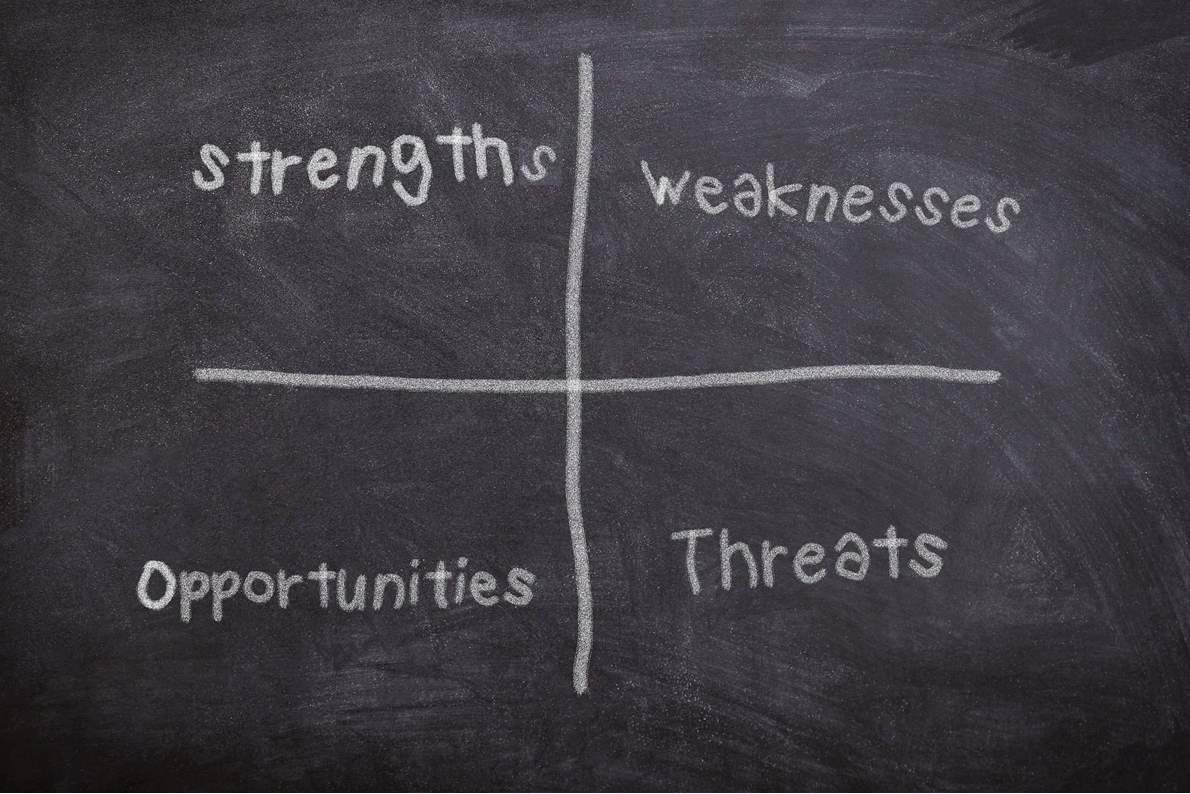If you are older than 16 years old, you will have come across the concept of a SWOT (strengths, weaknesses, opportunities, and threats) analysis in business somewhere; it may have been at your high school or university business class, or during a conversation in a business setting or at a social gathering. Perhaps you read about it in some of the many business books that are around.
اضافة اعلان
A traditional SWOT analysis involves identifying the strengths of the business and demands that a business should capitalize on those strengths to succeed. It also involves recognizing the business’ weaknesses and requires that a business should work towards improving or even eliminating them. Furthermore, businesses should identify and chase opportunities that exist in the marketplace and then minimize the external threats.
 SWOT analysis
SWOT analysis
This may be easier said than done for small and medium-sized enterprises (SMEs) that have limited resources and lots of issues to deal with. To be successful, an SME would still need to do the identification part of the SWOT analysis, but addressing each identified item may prove beyond an SME’s capabilities.
A smart SME would focus its SWOT analysis more on its strengths first, and rank them according to their importance and the business’ ability to capitalize on them. Next, it should identify the opportunities that exist in its direct marketplace and aim to match its greatest strength or strengths to the relevant opportunity or opportunities in the market. This way, the enterprise’s efforts would be better invested in matching one or more of its greatest strengths with the best direct opportunities that exist in the market. This should, in turn, bring about the finest and quickest results and avoid being scuttled by trying to improve its weaknesses and avoiding potential threats.
In my experience, working on strengths and opportunities naturally generates a positive mindset and creates greater energy directed towards business success. For example, one would feel much more energized to utilize the strong brand one has created to pursue a new export market than to have to deal with weaknesses in the internal tax reporting system.
Nonetheless, SMEs, in my view, still need to identify their weaknesses for two major reasons: Firstly, to be aware of them and have a future plan to deal with them when it becomes a priority to do so, and secondly to recognize when opportunities are lost because of them and accept that to be the case.
Smart SMEs realize that it is far worse to lose an obvious opportunity because they failed to capitalize on a strength they have than to lose an opportunity because of a weakness they decided was not a priority to deal with.
Deeb H. Aqabani is a professional accountant, auditor, and business expert and has acquired a diversified professional experience in finance, accounting, and consulting of over 25 years in Jordan and Australia. He taught at the University of Sydney and Macquarie University as well as TAFE NSW Australia.
Read more Opinion and Analysis



